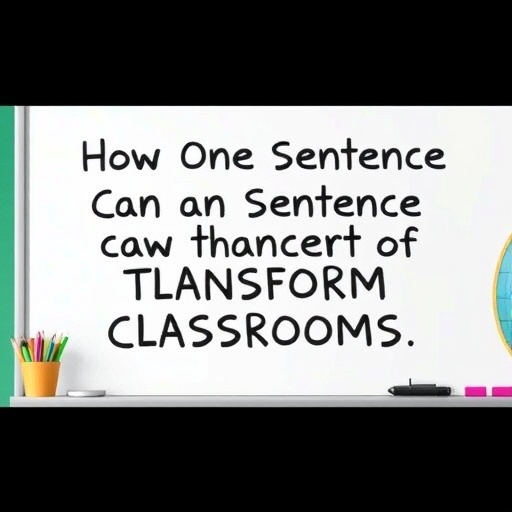Groundbreaking Research Reveals That Brief Instructor Disclosures of LGBTQ+ Identities Transform Classroom Dynamics and Foster Inclusion
Recent research emerging from Arizona State University’s School of Life Sciences has unveiled compelling evidence on the remarkable influence of brief, personal disclosures by undergraduate biology instructors about their LGBTQ+ identities. Contrary to long-held assumptions about classroom neutrality, these fleeting moments—often no more than a few seconds during a syllabus overview or introductory lecture—can decisively shape students’ perceptions and emotional experiences throughout an academic term. This study, published in Cell Biology Education, challenges educators to reconsider the nuanced power of authentic visibility in shaping inclusive learning environments.
The investigation specifically explored the broader effects of instructor identity disclosure in the context of biology classrooms across diverse U.S. universities. Led by Carly Busch, a former ASU student and principal author, the research team collaborated with nine LGBTQ+ biology instructors representing various institutions nationwide. Over 2,000 undergraduate students participated in end-of-semester surveys designed to capture their cognitive and emotional responses to their instructors’ brief revelations. The findings elucidate a profound impact, particularly noticeable among students from marginalized communities.
A striking 88 percent of respondents recalled the instructor’s disclosure, underscoring that even the briefest mention of personal identity resonates deeply with students. This statistically significant recall rate suggests that these moments are neither trivial nor easily overlooked, as might have been expected. Furthermore, nearly 90 percent of students affirmed that it is appropriate for faculty members to share LGBTQ+ identities within the classroom setting, debunking prevalent anxieties regarding potential negative reactions or accusations of inappropriateness.
Beyond general acceptance, the research delved into how identity disclosure affects specific populations. LGBTQ+ students experienced substantial benefits, reporting enhanced feelings of connection to instructors, increased belonging not only within the classroom but also within the broader scientific community, and greater comfort in seeing LGBTQ+ representation in traditionally heteronormative fields. This aligns closely with established theories in social identity and representation, where visibility fosters validation and mitigates feelings of isolation.
Complementing this, women, nonbinary students, racially minoritized individuals, and students grappling with mental health challenges such as anxiety and depression reported similar boosts in inclusion. These intersecting identities reveal that the positive effect of disclosure extends beyond sexual orientation, touching upon a multifaceted spectrum of marginalized student experiences. The researchers hypothesize that personal disclosures by instructors create an environment of trust, signaling vulnerability that students can reciprocate.
Sara Brownell, the study’s senior author and a President’s Professor in the School of Life Sciences, emphasizes that the brief disclosures are not a performative gesture but a trust-building exercise. “By sharing something personal and vulnerable, instructors demonstrate trust in their students, which can catalyze reciprocal openness and foster deeper class cohesion,” she remarked. This conceptual framework resonates with pedagogical models prioritizing authentic engagement and psychological safety in learning environments.
Importantly, this research provides empirical evidence to dispel entrenched fears among educators that such revelations might alienate students or provoke controversy. The study’s cross-institutional nature, encompassing diverse political and social climates across the United States, further indicates that geographic context does not significantly predict student responses. Only about 1 percent of respondents reported any negative impact, suggesting that anticipated backlash is disproportionally overstated among faculty.
The implications of these results are nuanced for pedagogical practice. While personal identity disclosure remains a deeply individual and voluntary decision for instructors, the documented benefits for students suggest that even minimal, sincere moments of self-disclosure can function as powerful inclusive interventions. The study encourages faculty to weigh potential advantages for student belonging and representation against their own comfort and safety considerations.
Several technical aspects of the research methodology bolster confidence in these conclusions. The reliance on end-of-semester surveys ensures that students’ perceptions encompass the entire term’s academic and social experience rather than immediate reactions. The large sample size of over 2,000 respondents across nine classrooms enhances generalizability, while the focus on biology instructors, a STEM field with historically low LGBTQ+ visibility, underscores the significance of representation in scientific disciplines.
This study adds to a growing body of literature advocating for micro-affirmations and visibility as critical components in addressing systemic inequities within academia. The ability to create a supportive and inclusive classroom may hinge less on sweeping curriculum reforms and more on seemingly small, authentic actions by educators. As Brownell aptly summarized, “a disclosure as brief as five seconds can enact profound positive change without altering the core content or structure of a lecture.”
Carly Busch’s prior work, which focused on a single instructor’s disclosure, laid the groundwork for this broader quantitative exploration involving multiple instructors and institutions, solidifying the replicability of initial findings. This evolution from qualitative anecdotal evidence to rigorous survey analysis represents a significant step forward in understanding the social dynamics of STEM education.
In conclusion, this research invites educators across disciplines to reflect on their roles not only as knowledge transmitters but also as visibility bearers, whose personal authenticity can dismantle barriers in academic spaces. By fostering inclusivity through intentional vulnerability, instructors can contribute to reshaping the cultural fabric of science education, affirming the identities of all students, and inspiring future generations of diverse scientists.
Subject of Research: People
Article Title: Nine Undergraduate Biology Instructors Revealing their LGBTQ+ Identities in Class Resulted in Benefits for their LGBTQ+ Students and Students with Other Marginalized Identities
News Publication Date: 7-Nov-2025
Web References: http://dx.doi.org/10.1187/cbe.24-10-0254
References:
Image Credits:
Keywords: LGBTQ+ visibility, classroom inclusion, biology education, student belonging, STEM diversity, instructor disclosure, marginalization, educational equity, representation in science, psychological safety, identity disclosure, higher education




